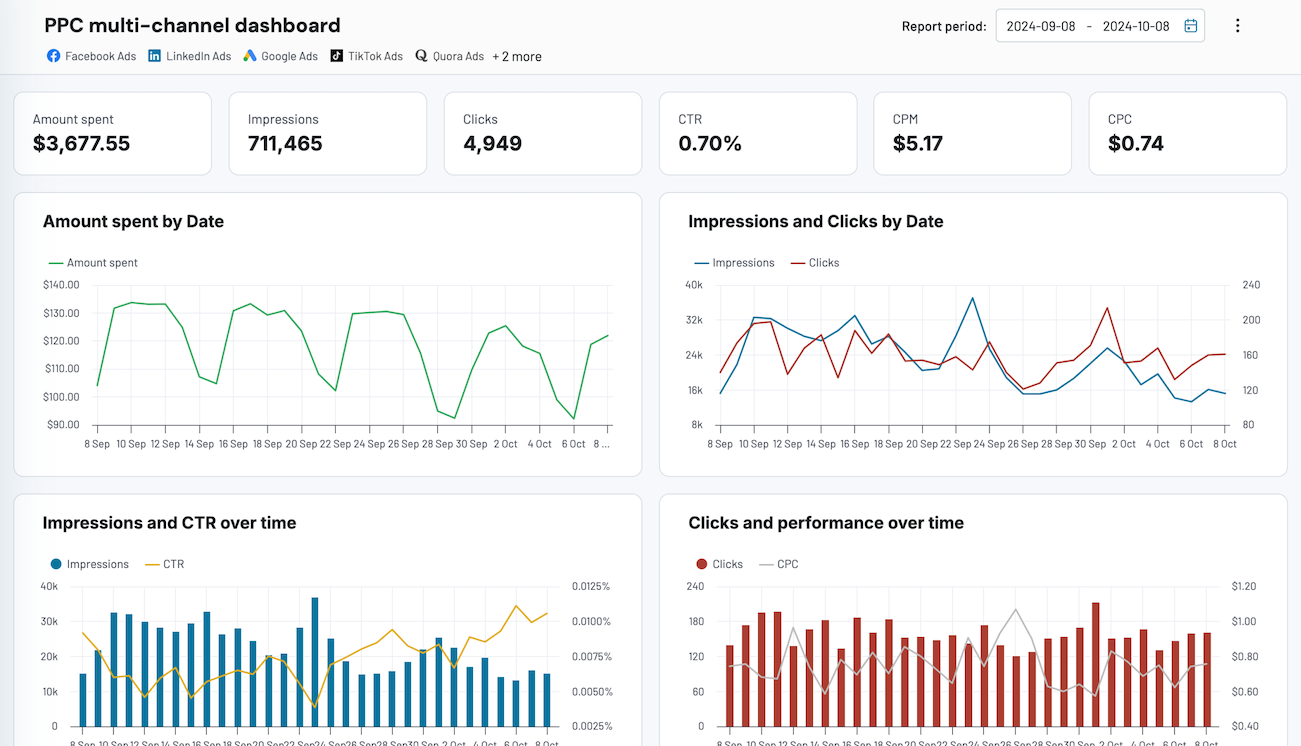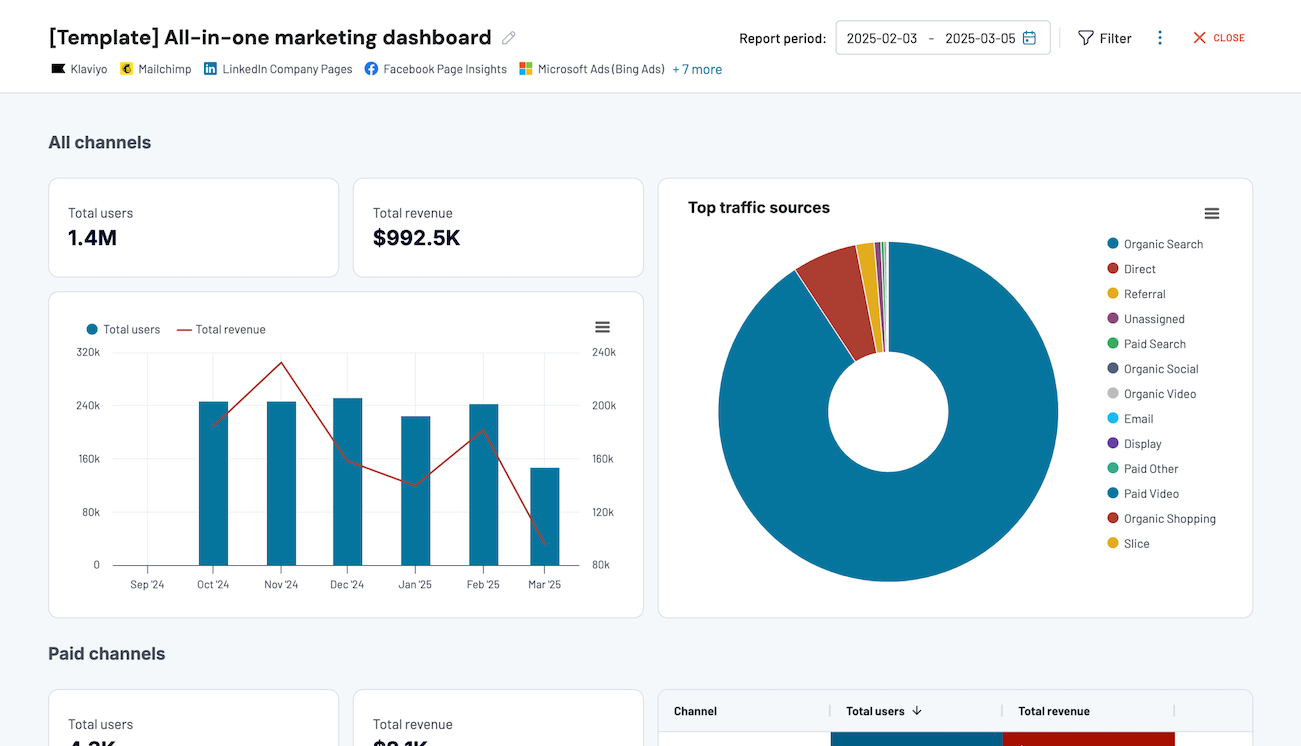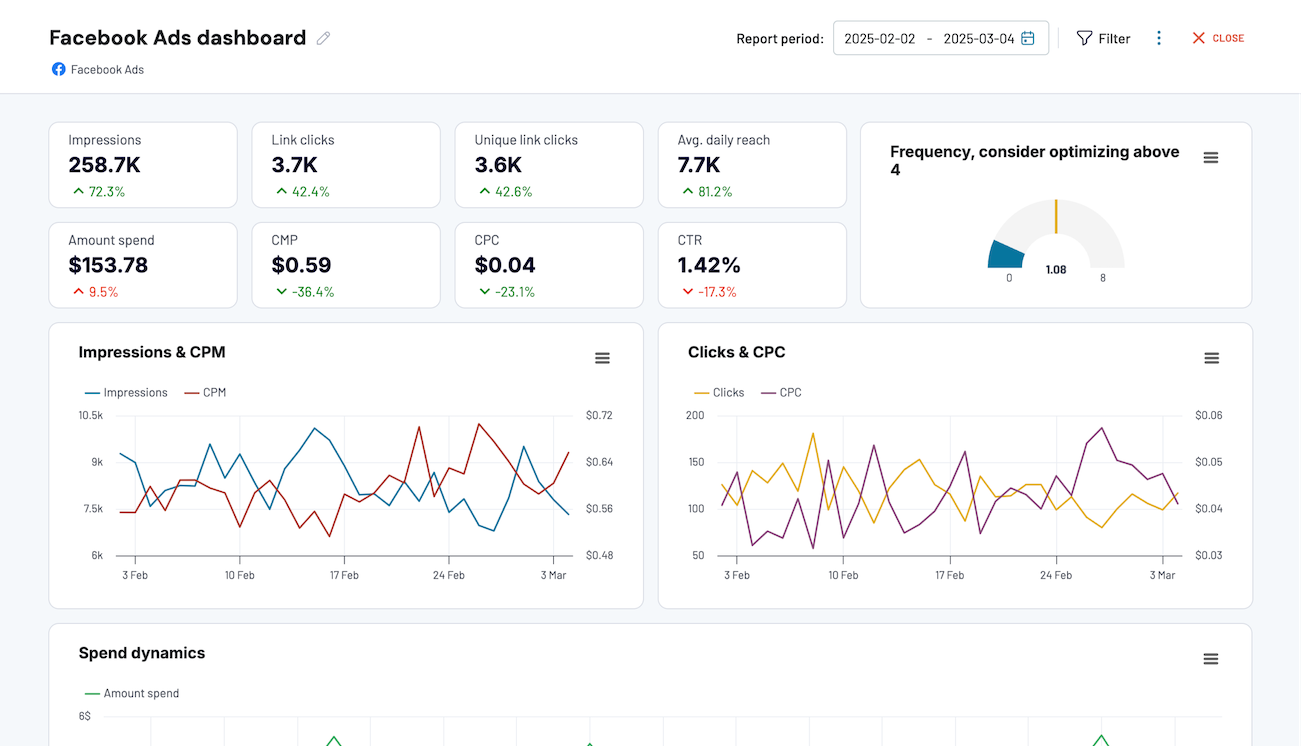Connect Google Drive to Power BI with Coupler.io to simplify reporting
Get and prepare data effortlessly
With Coupler.io, collecting and preparing data from Google Drive to Power BI is a breeze. Use the built-in data transformation module to streamline your workflow. Join data from other sources reliably and handle everything within a single Power BI connector.
Automate reporting tasks
Simplify your reporting process by automating data refresh from Google Drive to Power BI. Avoid tedious manual work and build detailed reports across multiple apps. Coupler.io offers free, ready-to-use dashboard templates to enhance your reporting efficiency.
Stand out as a data-driven expert
Use Coupler.io to create easy and transparent reports from Google Drive data in Power BI. Impress clients and stakeholders with near real-time insights. Enhance your data analysis capabilities and save time for more important tasks.
How to connect Google Drive to Power BI (detailed guide)
Step 1: Collect data
Begin by connecting your Google account. This simple process requires you to authorize Coupler.io to access your Google Drive data. Once connected, select a file with the needed data. If you're exporting data from a spreadsheet, you'll also need to specify a sheet or several sheets.

Optionally, you can specify a data range.
Step 2: Organize and transform
After establishing the connection, the next phase is to organize and refine your data before it's imported into Power BI. Coupler.io provides an array of features to help you customize and prepare your data:
- Preview Data: Review your collected data to ensure you have selected the correct files and fields.
- Filter Data: Apply filters to narrow down the specific information you need, excluding unnecessary data points.
- Sort Data: Organize your data logically to facilitate better analysis and reporting.
- Hide and rename Columns: Hide the columns that you don't need. Change column names to make them more descriptive or relevant to your reporting needs.
- Adjust Column Sequence: Reorder columns to align with your preferred data structure.
- Add Custom Columns: Use formulas to create new columns that provide additional insights or calculations relevant to your data analysis.
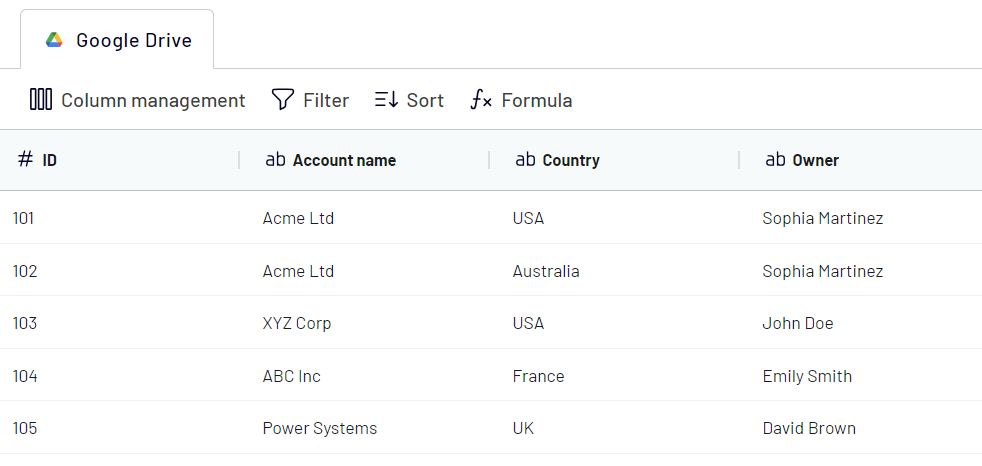
This step lets you optimize the data according to your specific reporting requirements. As a result, you ensure that it is analysis-ready before it reaches Power BI.
Step 3: Load and automate
To import data from Google Drive to Power BI, follow the app’s guidance:
- Generate the integration URL and copy it.
- Open the Microsoft Power BI desktop, click Get data, and select the option to retrieve information from the web.
- Paste the integration URL into the respective field. You’ll be offered to additionally transform the data in the Power Query editor and load the dataset to Power BI. The data source is ready for visualization.
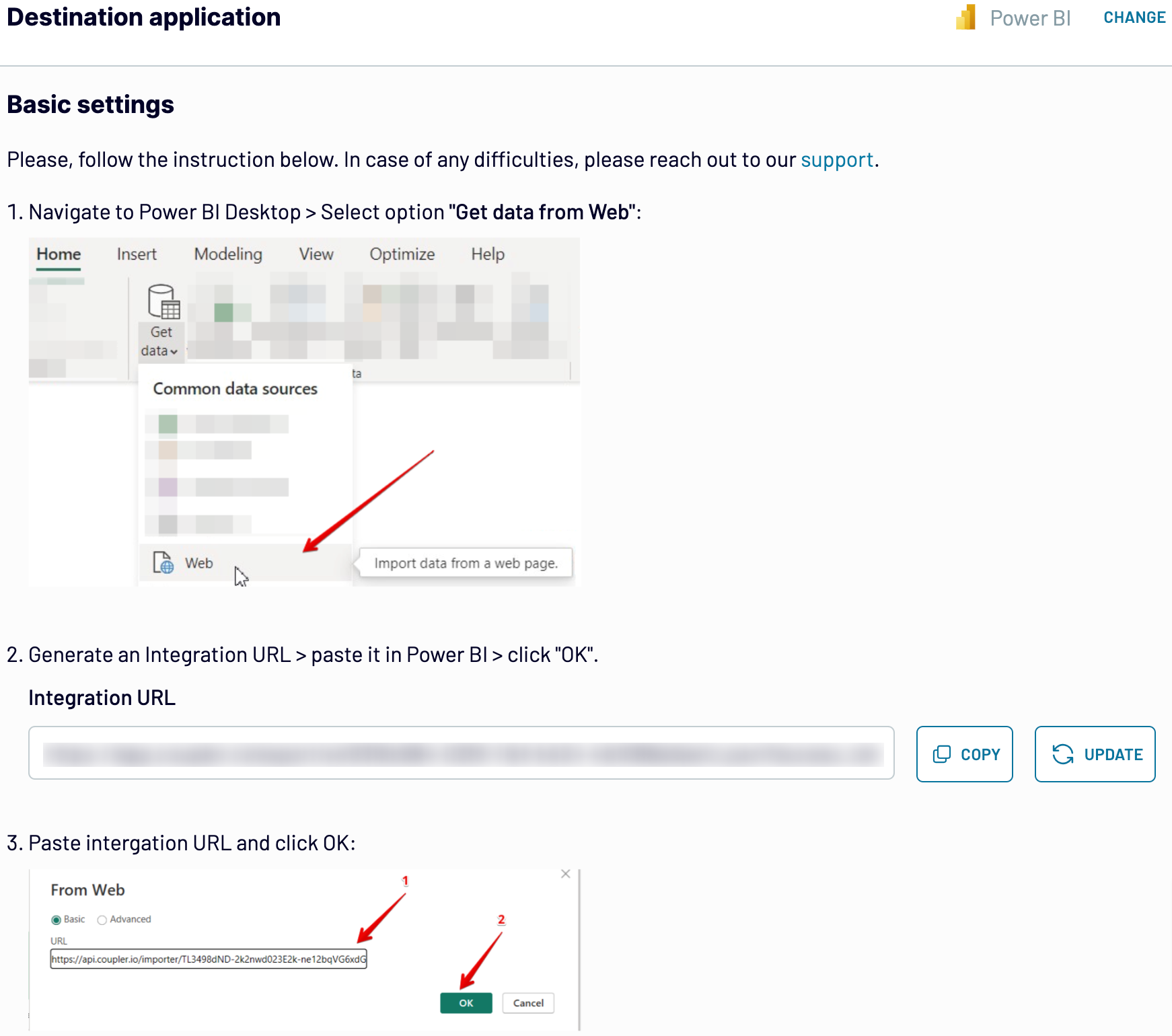
Export Google Drive to Power BI and schedule data refresh

Export data from Google Drive to alternative destinations
Quick start with dashboard templates
Export Google Drive to Power BI automatically with just a few clicks.
Connect similar Files & Tables apps and get data in minutes
What to export from Google Drive to Power BI
How do you connect Google Drive to Power BI?
Pricing plans
- Monthly
- Annual (save 25%)
Keep your data safe
Coupler.io safeguards your shared information and data transfers from breaches, leaks, and unauthorized disclosures.












